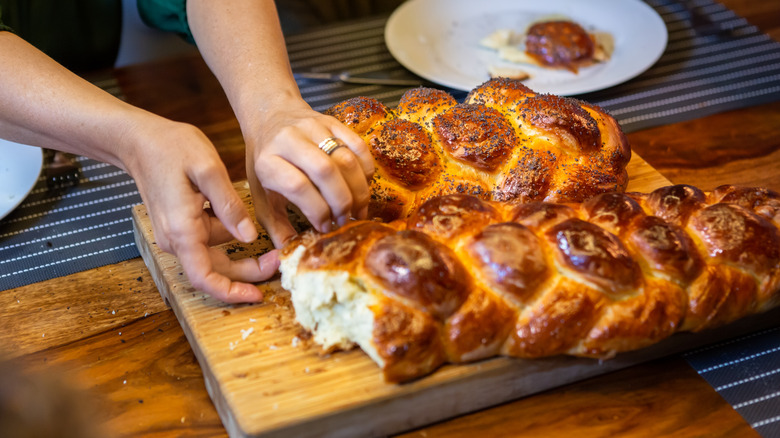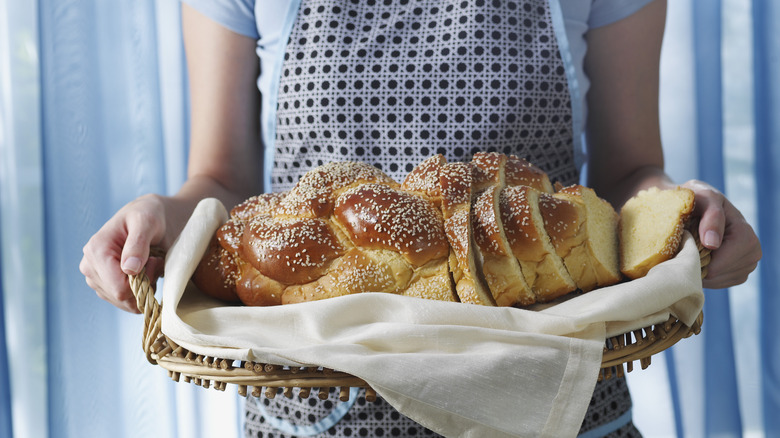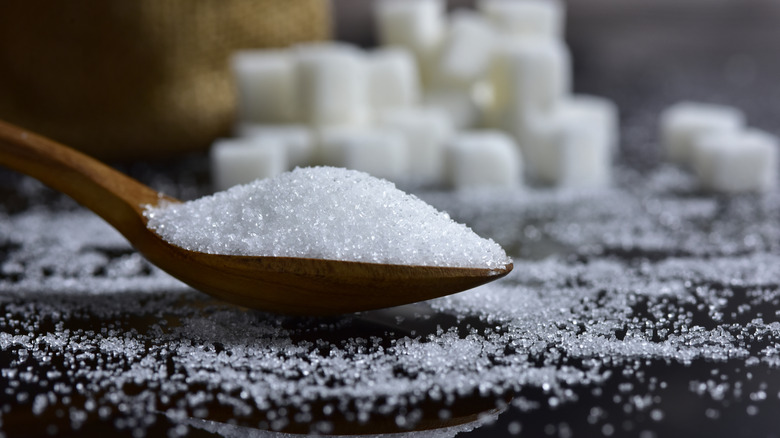How America Changed Challah Bread
It's not a Friday night Shabbat or a Jewish high holiday without a loaf of challah — the soft, slightly sweet, braided bread that's a vital and cherished piece of Jewish tradition. But you don't have to be Jewish to delight in a warm butter-slathered hunk of the chewy, golden bread, warm out of the oven, or whipped up into an indulgent French toast at brunch. To know challah is to love it.
Challah is widely beloved and enjoyed in homes, religious services, on brunch menus, and at delis, but there is no one customary or original challah recipe to point to when tracing its roots. The bread's origins and religious significance trace back to biblical times. (Though similar in their springy texture and sweet flavor challah and brioche are two totally different treats.) Over centuries, the bread spun off into countless iterations and versions, including varieties resembling pita and flatbread as Jews in the Middle East, Spain, and North Africa cultivated their own uniquely regional recipes.
But the soft, bouncy braided bread that we know as challah today came from Eastern European Ashkenazi Jews who brought the recipes from their homelands with them as they immigrated to America. Upon settling in the States, they found themselves with increased access to once-expensive ingredients such as flour, yeast, and sugar. With this newfound abundance came larger, sweeter challahs, more closely resembling the almost-cakey, golden, egg-washed treat we know and love today.
With new access to ingredients came new recipes
Home cooks who were used to baking challah with only the ingredients available to them in the old world suddenly found themselves surrounded by an abundance of riches in their new home in America. Where they had once been able to only make white bread — a true luxury — on special occasions like the once-a-week sabbath, in America, this influx of ingredients meant they had the option to regularly enjoy sweet, soft, white challah. With the availability of sugar and other sweeteners, challah slowly transformed from a more rustic, arguably healthier bread, into a larger, more leavened, and much sweeter loaf. (Most modern challah recipes today use either sugar or honey.)
This slow evolution of challah is hardly unique in the landscape of American cuisine, with so many of the dishes we think of as quintessentially ours originating with immigrants and slowly morphing into an Americanized version over time. It's an American custom to enjoy cakey fried dough with a hot coffee, but donuts originated with Dutch immigrants. And it was enslaved Africans who introduced okra into American cooking, now a staple on most modern soul food menus. These are just two of the countless examples, along with challah, of foods that were assimilated into American culture with the passage of time and cultural and economic influences.
The impact of big sugar's lobbying power
Along with cultural influences and changing access to resources, another force was at play that helped reshaped challah in America — the massive power of the sugar industry's lobbying machine. Jewish immigrants might have initially upped the sugar in their recipes thanks to increased access, but lobbying forces have been at work for over a century to ensure sugar is readily available and added, often in staggering amounts, to countless American foods.
With political connections and millions of dollars powering their engine, "big sugar" lobbying directly impacts American sugar production, policy, and sales, while funding studies to downplay the dangers of added sugars, even as health data suggests otherwise. Lobbying efforts are also partially to blame for the increased sugar content in everything from pasta sauces to salsa to yes, bread. Over time, challah has certainly become sweeter, but everyone's favorite braided bread is hardly the only food in the U.S. that has met this fate.
Ultimately, enjoying challah is a delicious, meaningful ritual that connects millions of American Jews to their heritage and religion and offers all who enjoy it a comforting, soulful treat. Modern cooks often make challah from cherished family recipes that have been passed down for generations, while at the same time doing what cooks and foodies have always done — innovating, experimenting, and finding our own favorite takes on time-honored traditions.


